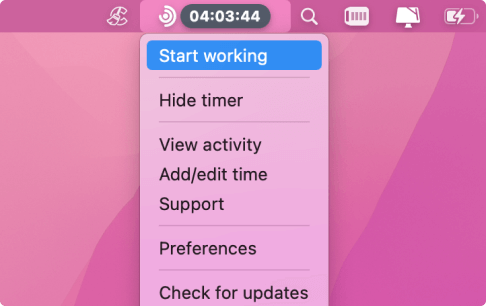
In today’s evolving workplace landscape, flexible work schedules have become increasingly important for both employers and employees. Among the various alternative work schedules gaining popularity, the 9/80 work schedule stands out as an innovative approach that many organizations are implementing to boost employee productivity while improving work-life balance.
Recent studies on workplace productivity have shown that flexibility over full-time working hours improves staff morale, workplace culture and productivity, not lessens it. Staff that have connected autonomy — that is, they have greater control over the where, when and how of managing their time and workloads while still feeling like they are an integral part of a team — are happier. And happier staff mean more productive staff. The more rigid the workplace, the more dissatisfied the staff, particularly if they are knowledge workers.
It goes without saying, but we’re saying it anyway (because it can’t be said enough) that the benefits of a flexible workplace for staff include:
being able to work around family commitments
taking a personal day that doesn’t use up sick days or annual leave
if they are travelling less, employees spend less money on gas and less time on the commute to work
reduced child care costs, which can be significant
working according to when they are most alert and creative
greater autonomy and control
being able to claim “work at home” tax deductions.
Benefits for the workplace include:
increased staff morale and therefore happier staff
decreased absenteeism and lateness
positioning the company as a “great place to work”
reducing employee “churn”
Of course, there are disadvantages on both sides, so these need to be weighed carefully against the advantages before implementing more flexible working conditions. And make no mistake, this is a change management project and will need to carefully planned ahead of time if it has any chance of being successful, and this includes changing systems and processes.
What is a 9/80 Work Schedule?

The 9/80 work schedule transforms the traditional nine-to-five workweek by redistributing 80 hours of work across a two-week period. Instead of working five eight-hour days each week, employees work eight nine-hour days and one eight-hour day over the two-week pay period, resulting in a day off every other week.
Typically, this schedule involves working four nine-hour days followed by one eight-hour day during the first week. The second week consists of four nine-hour days with the fifth day off, creating a three-day weekend for employees every two weeks. The extra hour worked each day accumulates to provide this additional day off without reducing total work hours.
9/80 Work Schedule as Your New Best Friend
There are a number of programs that are being introduced to workplaces to foster flexibility and these include remote work, working from home, job-sharing, the four day week and compressed hours week. One program that is attracting a lot of attention is the 9/80 work schedule (9 days, 80 hours — geddit?).
The 9/80 schedule is a simple concept that reaps a range of benefits for staff and workplaces. Staff feel more in control of their time and schedule, without having to sacrifice salary in return for reduced working hours. At the same time, organizations feel in control of their staff and payroll. It really is a win-win.
Simply put, the 9/80 schedule turns the standard 9 to 5, Monday to Friday work week on its head. The hours worked are the same in a pay period, assuming you work 80 hours in a fortnight. However, staff generally work a two week roster of four 9 hour days, then one 8 hour day that is divided across two blocks.
The first 4 hour block finishes off the first work week, and the second 4 hour block starts the second work week off. Four more days are worked in the second week, and then the employee has a day off as a flex day. Your staff will work their usual 80 hours per pay period (if that’s what they are contracted to work) without the need for payment of overtime, or time off in lieu.
The major consideration with the 9/80 work schedule is time tracking and payroll: you must designate one of the work weeks — usually week two — as the cut-off for input of payroll details.
Typically, this schedule involves working four nine-hour days followed by one eight-hour day during the first week. The second week consists of four nine-hour days with the fifth day off, creating a three-day weekend for employees every two weeks. The extra hour worked each day accumulates to provide this additional day off without reducing total work hours.
Sample 9/80 Schedule Breakdown:
First Week:
Monday through Thursday: Nine hours daily (e.g., 8:00 AM – 6:00 PM with a one-hour lunch)
Friday: Eight hours split into two four-hour periods
First four hours (8:00 AM – 12:00 PM): End of week one
Second four hours (1:00 PM – 5:00 PM): Beginning of week two
Second Week:
Monday through Thursday: Nine hours daily
Friday: Day off (creating a three-day weekend)
9/80 Work Schedule Benefits

For Employees:
Improved Work-Life Balance: The regular three-day weekends allow employees more time for personal lives and commitments.
Scheduling Flexibility: Employees can schedule appointments and personal activities on their regular day off without using vacation time.
Reduced Commuting: Commuting nine days instead of ten in a two-week period saves time and expenses.
Enhanced Job Satisfaction: The compressed work schedule gives employees more control over their time, increasing overall job satisfaction.
Better Personal Time Management: Knowing when longer weekends occur helps employees plan personal activities more effectively.
For Employers:
Enhanced Employee Productivity: Many employers report that the nine-hour workday allows employees to complete tasks with fewer interruptions.
Improved Employee Morale: The flexible schedule demonstrates trust in employees, boosting morale and loyalty.
Competitive Recruitment Tool: Offering alternative work schedules can attract talented professionals seeking better work-life balance.
Extended Coverage: The longer workday can provide extended service hours for customers or business partners.
Reduced Absenteeism: With a regular day off every two weeks, employees can schedule appointments without missing work.
Implementation Considerations
Legal Considerations Involved:
Before implementing a 9/80 schedule, employers must ensure compliance with existing labor laws, particularly the Fair Labor Standards Act (FLSA). This is especially important regarding overtime pay for non-exempt employees who work more than 40 hours in a workweek.
The Eight-Hour Workday Split:
The key to properly implementing the 9/80 work schedule is correctly managing the eight-hour workday that bridges the two weeks. This same day (typically Friday) is split into two four-hour periods, with the first four hours completing the first week and the second four hours beginning the second week. This arrangement ensures that each workweek contains exactly 40 hours, avoiding overtime issues.
Scheduling Process:
When transitioning to a 9/80 schedule, the leadership team should consider:
Whether the entire workforce will adopt the schedule or just certain departments
How to maintain adequate shift coverage during all business hours
Whether different groups will take different days off to ensure continuous business operations
How to accommodate hourly employees and tracking requirements
Challenges and Solutions

Potential Challenges:
Longer Hours: The nine-hour workday means spending an extra hour at work, which may be challenging for some employees.
Scheduling Conflicts: If different departments take different days off, it might complicate collaboration with business partners.
Shift Coverage: Ensuring adequate coverage, especially for customer-facing positions, can be challenging with fewer employees present on certain days.
Adaptation Period: Both management and employees need time to adjust to the new schedule and iron out any issues.
Solutions:
Flexible Start/End Times: Allow employees to choose their nine-hour shift within core business hours.
Clear Communication: Ensure all team members and business partners understand the new scheduling system.
Trial Period: Implement the schedule for a few months before making it permanent to address any unforeseen issues.
Regular Feedback: Gather input from employees about how the compressed schedule affects their work patterns.
Is the 9/80 Work Schedule Right for Your Organization?
The decision to implement a 9/80 work schedule should involve careful consideration of your organization’s specific needs. While many employees appreciate alternative schedules that provide better work-life balance, not every business operation can accommodate such flexibility.
Consider surveying your employees to gauge interest in a compressed work schedule before making changes. Additionally, analyze how the flex work schedule might impact business operations, shift coverage, and customer service levels.
Employee Well-Being and Productivity

Organizations that have successfully implemented the 9/80 schedule often report that the benefits extend beyond simple scheduling convenience. The alternative schedule can significantly enhance employee well-being by:
Providing regular long weekends for rejuvenation
Reducing stress associated with balancing work and personal commitments
Giving employees more autonomy over their time
Creating a culture that values work-life balance
Studies show that these factors can collectively boost employee productivity and increase job satisfaction, leading to higher retention rates and a more engaged workforce.
How Traqq Simplifies 9/80 Schedule Management
Traqq’s intuitive time-tracking solution makes implementing and managing a 9/80 schedule effortless. With seamless time capture, configurable payroll cycles, and privacy-first monitoring, you can focus on productivity— not paperwork.
Effortless Time Capture
Automatically record nine-hour days and the split Friday (two 4-hour blocks) without any manual entry.
Custom Payroll Cutoffs
Set your two-week pay period right in the dashboard so hours roll into the correct workweek and overtime triggers are never missed.
Automated Reporting
Generate detailed timesheets and shareable activity summaries for each pay period with a single click.
Real-Time Insights
See hours worked, attendance patterns, and potential overtime before it happens—so you can make data-driven staffing decisions.
Privacy-First Monitoring
Respect your team’s autonomy with metadata-only tracking—no screenshots, no invasive surveillance, just meaningful insights.
Seamless Integrations
Export to your payroll or HR systems in common formats (CSV, Excel) to streamline approval and disbursement.
By using Traqq, you’ll implement your 9/80 schedule confidently—ensuring every minute is tracked accurately while preserving trust and boosting team productivity.
Conclusion
The 9/80 work schedule represents one of several alternative work schedules that organizations can consider to improve employee satisfaction while maintaining productivity. By compressing 80 work hours into nine days instead of ten over a two-week period, both employees and employers can benefit.
Before implementing this schedule, ensure compliance with the Fair Labor Standards Act and other relevant regulations, particularly regarding how many hours constitute overtime for non-exempt employees. With proper planning and clear communication, the 9/80 schedule can be an effective tool for creating a more flexible, productive workplace that supports both business objectives and employees’ personal lives.
9/80 Work Schedule: Frequently Asked Questions
What is a 9/80 work schedule?
A 9/80 work schedule is an arrangement where employees work 80 hours over nine days in a two-week pay period instead of ten days, earning one day off every two weeks.
How does the 80 work schedule differ from traditional work schedules?
Traditional schedules have five 8-hour days weekly. The 9/80 schedule compresses 80 hours into nine days over two weeks, providing an additional day off while maintaining the same total hours.
How is the two-week pay period structured in a 9/80 schedule?
Week 1: Four 9-hour days plus one 8-hour day (split into two 4-hour segments) Week 2: Four 9-hour days plus one day off
How do employers track hours in a 9/80 work schedule?
Employers designate specific start/end times and implement timekeeping systems. The split 8-hour day must be carefully documented to properly allocate hours between workweeks.
Can employees work different days off in the 9/80 schedule?
Possible, but most organizations prefer consistent days off to ensure adequate coverage. Some companies rotate shift schedules to accommodate business needs.
How does a 9/80 schedule work for shift coverage?
Organizations must plan shift schedules carefully to maintain coverage. Many stagger employees’ days off or place different teams on different 9/80 rotations.
What happens if an employee works a few hours more than scheduled?
For non-exempt employees, hours worked beyond 40 in a defined workweek must be paid as overtime according to labor laws.
How does overtime work with a 9/80 schedule?
Employers must establish a workweek that splits the 8-hour day between two workweeks. Hours exceeding 40 in either defined workweek qualify for overtime pay.
Do employers pay overtime differently under a 9/80 work schedule?
Overtime requirements remain unchanged—non-exempt employees receive overtime for hours over 40 in a workweek. The key is properly establishing the workweek division.
How is sick leave calculated in a 9/80 work schedule?
Sick leave must be adjusted for longer workdays. If an employee misses a 9-hour day, they use 9 hours of sick leave instead of 8 hours.
If an employee works on their scheduled day off, how is compensation handled?
Hours worked on a scheduled day off count toward that workweek’s total. If this exceeds 40 hours, overtime pay applies to the excess hours.
What happens if the 9/80 schedule doesn’t work for certain employees?
Organizations may need to accommodate employees who cannot work 9-hour days due to legitimate reasons. Some offer flexible alternatives or exemptions.
How do holidays affect the 9/80 schedule?
For holidays on regular workdays, employees typically receive standard holiday pay (8 hours) and may need to make up the additional hour if they normally work 9-hour days.
What if an employee works from home on a 9/80 schedule?
Remote employees can work 9/80 schedules with clear expectations for availability, communication, and productivity, plus proper timekeeping systems.
Can part-time employees participate in a 9/80 work schedule?
Part-time employees can work modified versions proportional to their hours. Organizations should create appropriate schedules that maintain fairness while providing flexibility.

